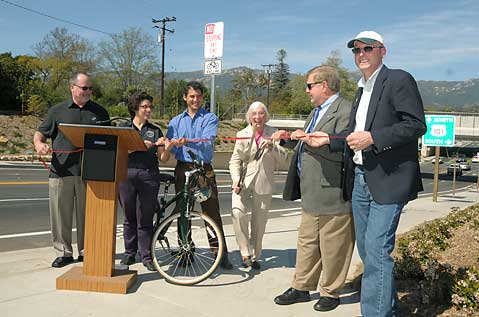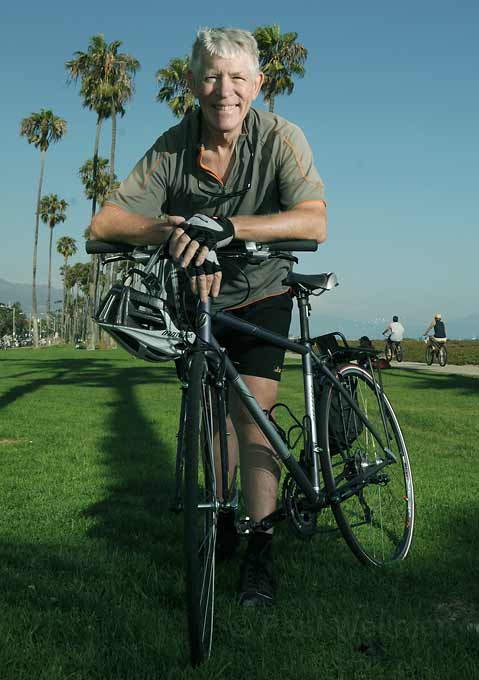More Bikes on City Streets
Santa Barbarans Are Shifting Gears

“A man sees what he wants to see, and disregards the rest,” Paul Simon sagely tells us. Regarding transportation in Santa Barbara, some say traffic congestion is worse, others say they think more people are walking and biking. Some say that drivers are speeding too near their homes, while others are telling the city to remove motorist obstacles like pedestrian bulb-outs. How are we to know what’s really happening?
Wishful thinking and shaking fists at elected officials may have their places, but statistics give us a more reasonable overview of long-term changes that are taking place in Santa Barbara. In September, the U.S. Census Bureau released new data that give us a good view of behavior changes that are happening here. Essentially, Santa Barbara residents are driving less to work, and instead are choosing to bike and walk to jobs, or work at home.
Between 1990 and 2008, the Census Bureau tells us, driving to work here decreased by 8 percent: from 81 percent to 73 percent of all commute trips. Of those 8 percent former drivers (about 3,700 people), 4 percent are now working at home, 2 percent are choosing to bike, and one percent are walking to jobs. Those taking the bus or motorcycles/mopeds also increased, but by less than one percent each.

Compared to our fellow Americans in 2008, Santa Barbara residents are doing fine in terms of sustainable, responsible transportation. We currently have 10 times the proportion of people bicycling, three times as many walking, twice as many on motorcycles/mopeds, and twice the number working at home than the national average. Conversely, we have fewer on public transit, as well as fewer driving than the rest of our country.
Separate data confirm that there are more bicyclists on city streets. Since 1997, the nonprofit the Santa Barbara Bicycle Coalition has coordinated with the city government to gather data on bicyclists at area intersections. The most recent count, done in June 2009, shows that we had a 16 percent increase this year in the number of people bicycling, over the average from the four previous years. We’re talking about two-hour counts at 25 intersections, totaling 17,017 cyclists counted during the five years, at an average of 68 cyclists hourly per intersection.
We should certainly be pleased that Santa Barbara residents are turning to more environmentally responsible means of travel. We all benefit from the cleaner air, reduced traffic congestion and noise, increased productivity, and lower health-care costs.
There are perhaps four reasons for the changes:
One, people are aware of global climate change and are choosing sustainable means of travel that pollute less.
Two, people are looking at their budgets and discovering that $8,100 a year typically goes to getting around by car, so they are changing how they travel to save money.
Three, people are scared by the overweight epidemic affecting so many people, so they’re changing to active lifestyles like walking and biking instead of sitting in a car.
Four, the City of Santa Barbara is actively leveling the playing field so that all means of travel are equally accessible to residents. For too long, the city had been building for the least energy-efficient, most expensive, and most space-consuming means of travel: the automobile. Today, new bike lanes on city streets are providing bicyclists with safer places to ride. Intersection bulb-outs are making it safer for people on foot to cross the street. Traffic-calming measures are reducing collisions and making those that still happen less serious.
The trends during the past two decades will likely continue, if not accelerate. The age of the automobile is not gone, but it has lost its luster and is being questioned critically by residents who are looking to our future, not our past.



